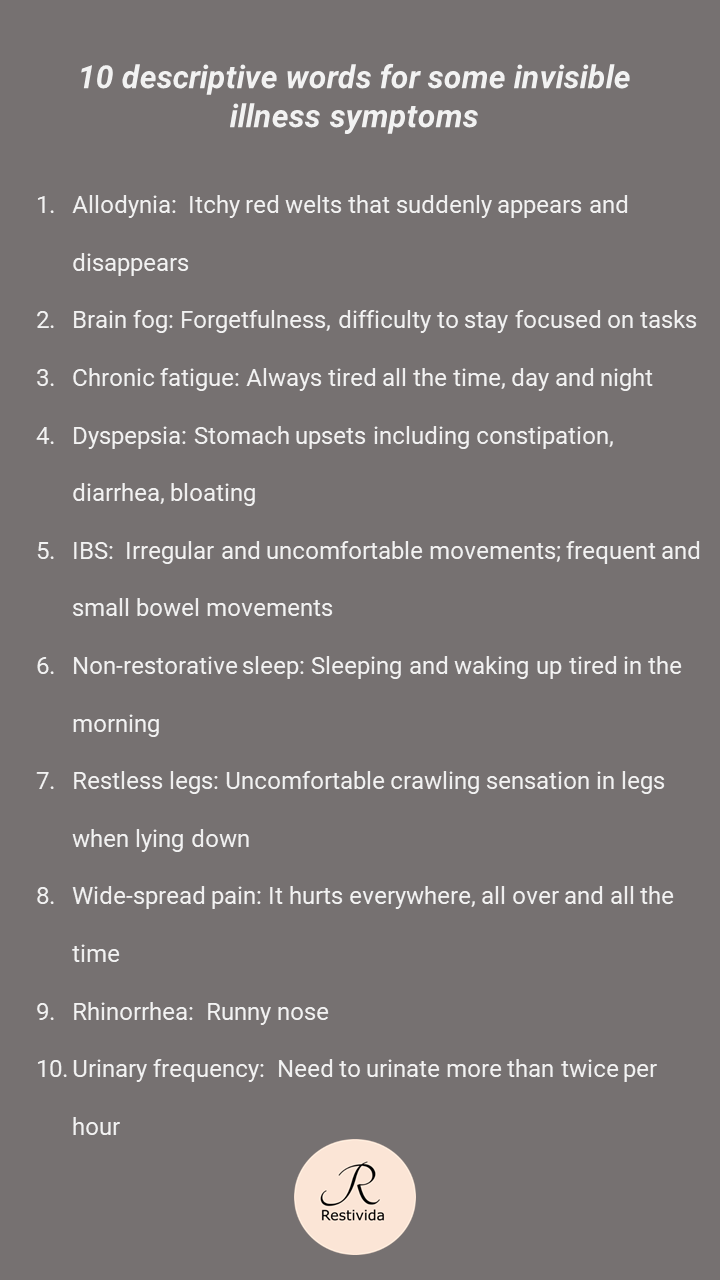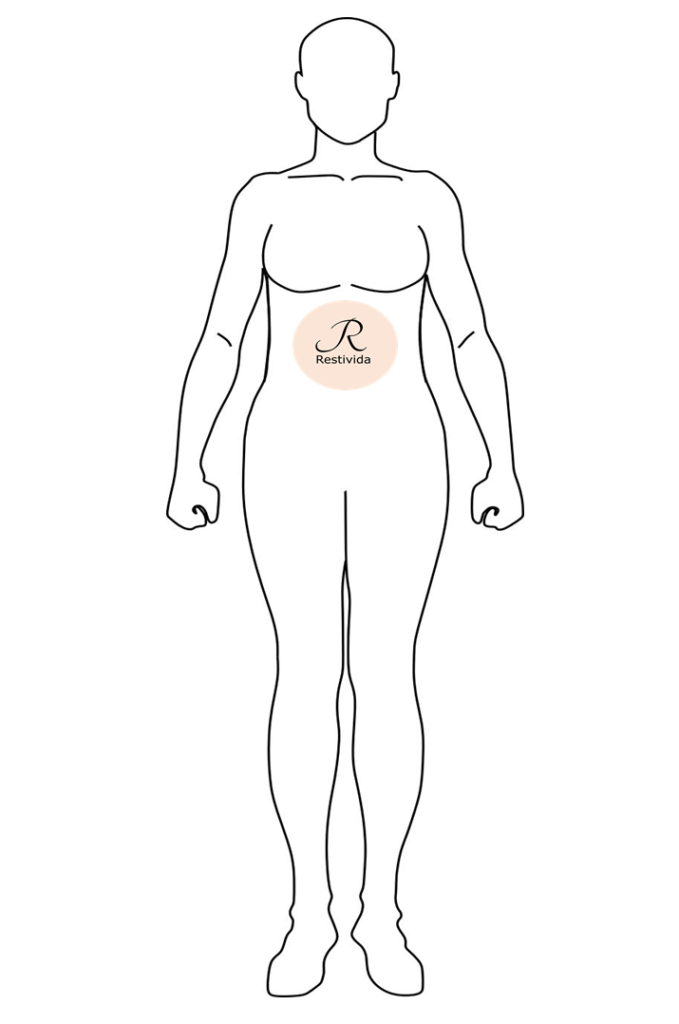Fibromyalgia is an invisible illness that is characterized by widespread pain and about 200+ other symptoms.
How is fibromyalgia diagnosed?
You’ve been suffering for months and you’ve been seeing so many different doctors and nobody can really tell you what is wrong with you.
Every single test result that you get back is normal, your blood count is fine, your cholesterol is fine, maybe your white blood cell is a little bit elevated but not too much to concern your doctor. If you’re lucky you’d get to do a full body scan or CT and MRI scan and see that all your organs are fine.
But deep down inside you know that there is something wrong with you. Maybe you’re a little bit scared that this mystery illness that you have will eventually kill you or maybe you think that you will not be able to have the best quality of life.
The worst part is no one believes you; they think that you’re just being lazy. They think that you’re just complaining all the time. Or that you’re just plain old grumpy. Deep down inside you know that there is something wrong with you, there’s a different person looking back at you in the mirror.
This time is different. You have resolved to end this sad, sick, tired cycle once and for all!
Today is the first day of the last day!
If you or someone you love suspects that (they or) you’re suffering from an invisible illness such as Lupus, Chronic Fatigue (CF), Fibromyalgia (FM), Rheumatoid Arthritis (RA), Plantar Fasciitis (PF), Sciatica, a pinched nerve or an old injury that never healed then this article is for you!
Before we get into the three ways you can get your Dr. to diagnose you with an invisible illness, the first thing you have to do is decide that you have had enough and it is over TODAY!
A change will begin and a new journey to understanding your condition will start today and…it starts now!
Here are three (3) ways that you can get your doctor to diagnose you with an invisible illness
1. Make a list of all your symptoms
Take some time and sit in a quiet space and begin to think about your current symptoms. Try to feel and identify the kind of pain you’re feeling and where it’s coming from. If your head hurts ask yourself where it hurts? Top? Front? Back? Then ask yourself what type of pain is it? Sharp? Dull? Throbbing? Does it come and go? Does it linger?
Take some time to sit and start from the top of your head to the bottom of your feet. Write numbers from 1 to X? on the body frame. On the back of the page, list the symptom that corresponds with this number.
Or you can simply draw a small arrow or line and fill in the symptom accordingly. You’ll be so surprised with all the symptoms that you can come up with.
Even if it only happened a few times write it down anyway. You can track the trends later. It’s better to put more symptoms than to put less.
Use our body form to write down all your symptoms. Keep this in a safe place to take to your Dr. on your next visit.
Side note: Research your symptoms using credible sources
We are always discouraged from getting keyboard diagnosis but sometimes a little help can get us to identify the specific names for a symptom.
For example, if you have an itchy welt, taking a picture of this and doing a quick “images” search can let you know that this most likely resembles allodynia.
With this information you can take a closer look at when this “allodynia” symptom appears and disappears.
This is helpful, important information that you can share with your medical professional. If you can find a precise way to identify your symptoms it will help to communicate your point even better.
Even if you don’t have allodynia, they have a perfect picture of what the welts look like because chances are many of your symptoms won’t be showing up the day you have your visit.
Here are some common symptoms and some names that can describe them:

2. Track your symptoms
Take some time to observe the pattern of your symptoms and when they start. Try to document as soon as you wake up in the morning where you feel pain. As your day goes by also try to document all your pain changes or if there are other symptoms that are right. As the day progresses observe your symptoms try to do it on something such as a symptom tracker chart. See below!
If you have a few minutes in the morning when you get to work, try to evaluate your pain and how intense it is. Record your symptoms over a few days. Using at least three sheets for a week and at the end of the week look for a trend. Find the trend in intensity and time when the pain is most severe or when it goes away. You might find that changing some external factors could help you manage some of your symptoms.
Another way to have an idea of your pain pattern is to record your eating pattern and all of the things that you have included in your diet.
Remember pushing peas around your plate as a kid and once you ate them it made you sick to your stomach?
Well, it could be your body’s way of telling you that you need to avoid certain foods because it may be harmful for you. Not, really suggesting that peas are really harmful but you get the idea.
Observe if there are any increase in symptoms that occur after you have eaten; record these changes. Keep an open mind, eat what you usually eat for now and be extra observant when you’re tracking your symptoms.
It’s better to over track than to dismiss some symptoms only for them to
appear again later and you’re unsure when it started.
We have designed a meal tracker with an example filled in for you so see.
Print up a few of these and add this to the two other files to give you and your Dr. really precise details on what you’re feeling after you’ve eaten.
3. Visit your Rheumatologist.
The most frustrating thing for a patient with invisible illness is a fruitless Dr. visit. You have gone to the Gastroenterologist so many times just and got the same prescription over and over and you are stuck in a recurring cycle.
They keep reassuring you that nothing is wrong or it can be resolved by the end of the pack of pills. But deep down inside you know that there is something going on that needs to be figured out. Make a list of all the doctors that you have gone to and all the diagnosis they have given you if any.
Try to recall all the medication that you’ve been given. And how you felt after taking them in the FREE Chronic Pain Symptom Tracker Chart to document how you felt after you have taken them.
Does the medication relieve your symptoms? Do you have side effects? How long have you been taking them?
Now that you know that none of these positions are able to help try to make a call to your general physician or your family doctor and take this record with you when you go see them and let them know all the other Physicians that you’ve seen.
If you don’t know who else to go to next, ask for directions from your hospital or clinic until you could be the one that is most fit to take care of your problem.
Usually, a Rheumatologist is a great start. They are most likely to diagnose and treat fibromyalgia from a medical level.
Once you get a diagnosis here are a few first steps to take. This can get overwhelming.
However if you want to treat yourself using supplements it’s important for you to visit the
Naturopath for guidance and supervision.
Whichever of these professionals you choose, make sure to take all of the records that you have acquired from the previous visits from all the other diagnoses including the tracking charts that you’ve accumulated.



